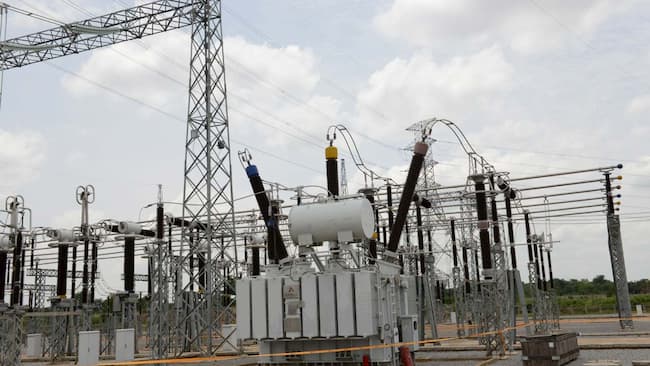Nigeria’s electricity system collapsed yet again last week. On Wednesday after many hours of blackout in some part of the country, the Transmission Company of Nigeria (TCN) announced a total system collapse caused by voltage collapse on some parts of the grid.
This occurrence has been a repeated event over the years with stakeholders trading blames and no end in sight.
The usual practice whenever there is a partial or total collapse of the power grid is that some parts of the country are plunged into darkness for hours and sometimes, days while the power distribution companies release separate statements informing their customers.
This time around, economic activities were jeopardized, financial losses were recorded due to many unproductive hours and the Eid-El-Fitri celebration in the country was affected. While the TCN said it had restored electricity to some affected areas and was working hard to fix the problem, the blackout persisted for about three days.
Despite the privatization of the sector and billions of naira in funding, industry statistics have shown that the grid collapse has been ongoing for over 10 years. In the last five years, the country has recorded not less than 52 total and partial grid collapses.
Findings showed that in 2017, there were a total of 24 grid malfunctions that plunged the country into darkness. About 15 of these were total grid collapses and nine partial collapses.
READ ALSO: 12 Power Plants Generate Zero Electricity As Blackout Persists
In 2018, the grid failed to transmit electricity as it collapsed 13 times.
At least 10 were recorded in 2019 – nine total and one partial collapse while five system collapses were recorded in 2020, according to industry statistics.
Impact Of Poor Electricity
According to an analysis by the World Bank, businesses operating in the country lose about $29 billion annually due to unreliable electricity.
The bank added that 85 million Nigerians don’t have access to grid electricity. This represents 43 per cent per cent of the country’s population and makes Nigeria the country with the largest energy access deficit in the world.
The Bank’s Practice Manager West and Central Africa Energy, Ashish Khanna, while presenting the ‘Power Sector Recovery Programme Fact Sheet’ during a virtual meeting last month said that Nigeria’s power sector had not kept up with demand or provided reliable supply to existing customers.
The bank said one in 10 people without access to electricity now lived in Nigeria with 78 per cent of power consumers in the country getting fewer than 12 hours of daily supply.
According to an analysis by the World Bank, businesses operating in the country lose about $29 billion annually due to unreliable electricity.
He noted that Nigerians receive a half supply of electricity despite paying utilities while wealthy neighbourhoods enjoy a more relatively stable electricity supply due to huge government support.
“Six in 10 of registered customers are not metered, and their electricity bills are not transparent and clear. This contributes to resistance to pay electricity bills,” Khanna added.
Meanwhile, the Federal Government has faulted the report of a survey conducted by the World Bank that claimed that 78 per cent of power consumers in Nigeria get less than 12 hours of daily supply of electricity.
The Special Adviser to the President on Infrastructure, Mr. Ahmad Zakari, in a statement on Sunday queried the source of the empirical evidence used by the World Bank used to arrive at the figures, saying the bank’s report was inaccurate and unverifiable.
He emphasised that the power distribution to consumers is steadily improving.
“It is inaccurate to make a blanket statement that 78 per cent of Nigerians have less than 12 hours daily access. The data from NERC is that 55 per cent of citizens connected to the grid are in tariff bands D and E which are less than 12 hours supply,” Zakari said.
Reasons For System Collapse
Stakeholders have always traded blames for the grid collapse.
The power distribution companies (Discos), have over the years, blamed the obsolete equipment for the persistent grid collapse that leads to several hours of power cuts.
READ ALSO: Bulk Power Transmitted To All 330 KVA Across Entire Grid – TCN
The Association of Nigerian Electricity Distributors (ANED) recently complained of the regular system collapse, attributing it to the outdated and analogue equipment used by the TCN.
The Director of Research and Advocacy at ANED, Sunday Oduntan, explained that the transmission substation had not been equipped with standard power protection, leading to incessant system collapse.
Meanwhile, the TCN often accused Discos of rejecting allocated electricity load, thereby putting intense pressure on grid capacity. When there is imbalance between the power generation and supply, and the amount of power that is being wheeled to end-users, then the grid collapses.
Energy analysts noted that the TCN performs the dual role of a market and a systems operator, which does not allow for proper checks and balances.
The TCN is responsible for evacuating electric power generated by the electricity generating companies (GENCOS) and wheeling it to distribution companies (DISCOS).
According to them, the corporation has not designed and meted out the right sanctions to the Discos for rejecting load transmission.
Sanctions For Load Rejection
In February this year, the Nigerian Electricity Regulatory Commission (NERC) signed a new set of guidelines that will ensure power distribution companies are sanctioned for load rejection.
The document on the guideline also showed that TCN will be punished for its inability to wheel electricity sent to it by the power generation companies (Gencos).
The document signed by the Chairman of NERC, Mr. Sanusi Garba and Commissioner for Legal, Licencing and Compliance, Dafe Akpeneye, seeks to settle the existing imbalance between the Discos and the TCN.
This means that in a situation where it has been established that TCN is unable to deliver a Disco load allocation, the TCN shall be liable to pay for the associated capacity charge.
Also, where a Disco fails to take its entire load allocation due to constraints in its network, the Disco shall be liable to pay the capacity charge as allocated in its vesting contract. It remains to see if this sanction will be implemented as the practice of load rejection by the Discos has not stopped.
N714.75 Billion Funding To Improve Grid Capacity
The TCN has received external funding to the tune of N714.75 billion to improve the capacity of the national grid and raise the transmission capacity from present 8,100MW to 20,000MW.
In 2010, the agency received $300 million (N108.6 billion) loan from the World Bank as part of the Nigeria Electricity and Gas Improvement Project (NEGIP) by its project, which ended in 2018.
In April 2018, the TCN got a grant of $12.4 million (N4.5bn) from the Japanese Agency for International Cooperation (JICA) for the installation of power capacitors and switchgears at the Apo (Abuja) and Keffi (Nasarawa State) transmission substations.
The TCN in September 2019 said it has obtained $1.661bn (N601.3bn) multilateral loans from five agencies – World Bank, African Development Bank (AfDB), the French Development Agency (AFD) and European Union (EU) and JICA.
The fund is meant for the procurement and installation of projects under its Transmission Rehabilitation and Expansion Programme (TREP).
In 2020, the World Bank approved $750 million loan to Nigeria for the Power Sector Recovery Operation (PSRO) that will ensure that 4,500 MWh/hour of electricity is supplied to the distribution grid by 2022 by strengthening the regulatory, policy, and financing framework.













